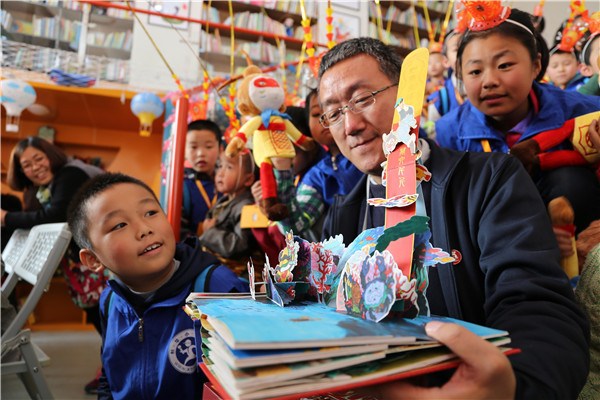
Yan Hongbing, the paper-art designer of the book, with children at a promotional event in Xi'an. (Photo provided to China Daily)
Explaining how he achieved this, Yan says: "This is a detail that I racked my brain to get right. I studied many books, made as many models as I could, and finally I devised a technique called 'secondary boost'."
Yan also invited illustrator Huang Li and her team from the Taiyang Wa Illustration Studio to help with the book.
Describing her role, Huang says: "Respecting tradition is not simply using ink wash painting or paper-cutting techniques. We traced the religious origin of the story and took images and colors from the Dunhuang frescoes in Gansu province. For instance, the Thunder God's image comes from his Dunhuang prototype."
Huang's colleague Li Chunmiao says due to their research they used only colors like black, gray, yellow, red and indigo that are traditional to Chinese paintings.
Thus the book's seven fairies and clouds are inspired by Dunhuang, but are presented in a contemporary artistic language, says Li.
The illustrations in the book were redone three times after the first samples were produced to get the 3-D effects right.
Essayist Yuan Qiuxiang, who was in charge of writing the story, says the story is told from a global perspective. "The language is colloquial."
Commenting on the book, Lin Wen-Pao, a Taiwan-based Taitung University professor of children's literature, says China bought the copyrights of 4,000 picture books last year, while creating just 2,000 original titles. "But now, we finally have a decent and luxurious pop-up book telling our own story, recreating our history and memories."


















































